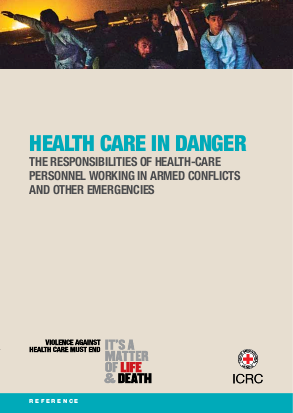
This guide is intended to help health-care personnel adapt their working methods to the exigencies of armed conflicts and other emergencies. The provision of health care in these circumstances can give rise to many unforeseeable dilemmas. The guide cannot provide answers to such dilemmas; it should, however, provoke reflection, ease the making of decisions, fuel discussion and, ideally, provide guidance for practice in the most difficult circumstances. It may be difficult to discuss the subjects dealt with in the guide during an armed conflict or other emergency. Health-care personnel should consider their responsibilities in armed conflict or other emergencies in advance; that is, before they take on the responsibility of caring for the wounded and sick. It is essential that time and consideration be given to these issues beforehand. For all health-care personnel, this should be part of their training and practice. Doctors, nurses, paramedics, physiotherapists, dentists, hospital administrators, porters, ambulance drivers, and humanitarian aid workers: these are only some of the people at whom the guide is aimed. This inclusive approach reflects the broad definition of “medical personnel” in humanitarian law.4 It must be noted that this definition includes both military and civilian health-care personnel.
Resource collections
- UN Habitat - Urban Response Collection
- Urban Response - Urban Crisis Preparedness and Risk Reduction
- Urban Response Collection - Community Engagement and Social Cohesion
- Urban Response Collection - Economic Recovery
- Urban Response Collection - Environment and Climate Change
- Urban Response Collection - Housing, Land and Property
- Urban Response Collection - Urban Crisis Response, Recovery and Reconstruction
- Urban Response Collection - Urban Resilience